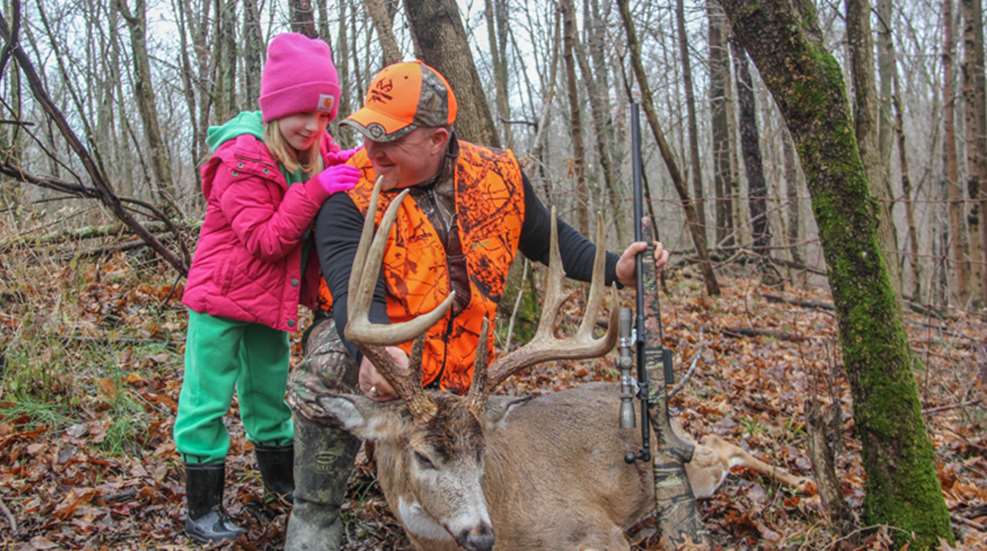
If you go by what old-timers say, you might think mentoring new hunters is mostly about rationing ammo. According to a much-repeated proverb, the newbie is sent forth with just one round, and must bring back meat in order to earn another. That would indeed motivate one to pick their shots carefully. But unless you’re already a crack shot, it’s not how you become one, since shooting skills are built through repetitive practice.
With that in mind, here’s a five-step guide to mentoring budding hunters to positive outcomes that will help him or her fall in love with this all-American pastime.
1. Hit the Range—Before any actual hunting, newcomers must gain the skills needed to make killing shots. Depending on the student’s level of training, they may need full-on gun-safety and basic handling lessons. Rifle shooters may need instruction in shooting technique, especially when firing from the position(s) typical for your style of hunting. Life-size targets fired at realistic distances provide great practice and a reflection of the student’s ability, and also teach important lessons in anatomy and shot placement.
In addition to safety and handling basics, wingshooters may need coaching on mounting, footwork and swing-through. Clay birds are ideal for training, and sporting clays is especially valuable because of the variety of targets that simulate different kinds of hunting. If you have a safe place to shoot, a handheld thrower can zing clays for useful (and fun) practice.
And so the first step is to shoot with your beginner or refer them to qualified instruction. Only when they can demonstrate competence on the range are they ready for the real thing.
2. Lead by Example—The tried-and-true method for training new hunters is for them to accompany parents, grandparents, etc., strictly as an observer at first, “graduating” to full participant when the time is deemed right. This is the norm among family groups and where possible there’s still no better way. But with more and more recruits coming as teens or adults, it behooves us to accommodate their natural inclinations to get right in on the action.
Let’s also recognize that TV hunting shows can be a kind of surrogate mentor. Yes, I know there’s plenty of buffoonery on the tube, which tends to suggest hunting is much easier than it really is, that it’s all about trophy size and getting all puffed up after a kill is a virtue.
On the other hand, TV depictions can help newcomers envision what can and is supposed to happen. Verbal and written stories can’t quite match the ability of video to convey what it looks like when a tom turkey comes to a call, how to maintain proper spacing during a group pheasant hunt and other scenarios. While it’s far from real-time experience, viewers get a sense for the sights and sounds, the positioning of hunter and prey, the pacing, the need for stealth, and when to wait and when to shoot.
Or why not combine the two methods? Watch a couple of shows together and speak your mind, both about what’s worthwhile and what isn’t. Then, with just one gun, take your trainee out for what may be a dry run, or—if you both feel the situation is right—could instead be his or her first actual hunt.
3. Take a Walk, Have a Seat— An even better intro, in my opinion, is a preseason visit to your hunting spot. When that can be arranged, walk through the woods or fields, look for sign, try to spot wildlife—the animals you will be hunting and others. Perhaps even climb into the stand or blind you will be using. Scouting it out is a great way to orient budding partners before the action and pressure of the real thing factor in. A dress rehearsal helps them to break-in new boots and get used to their hunting clothes while learning to walk quietly and use their eyes and ears like a predator. It’s okay to enjoy some quiet conversation, especially if the actual hunt is some time off. It should be a time for fun.
It’s also a time to practice and learn using some of the tools of the trade. Binoculars—so important to the overall experience—can be tricky for first-time users, and so instruction is in order. If the trainee is willing, you may also want to break out some game calls and tune up for the coming performance.
The point here is that any ground you guys can cover in a warm-up session will contribute to making the hunt more rewarding and productive.
4. Keep it Simple—Avoid starting with hunts that are overly challenging—those requiring lots of time, money, physical exertion and arcane equipment—as well as situations likely to require split-second decisions and follow-through. Pursuing game that is abundant and easily located is the ideal scenario. Though hunting wild animals is never truly a controlled situation, some outings tend to be fairly predictable, thus giving newbies a better chance to process what is happening and to prepare to make a good shot. Game that comes to the hunters—deer from stands and blinds, spring turkey, waterfowl and doves—give beginners prime opportunities to be safe and successful.
The downside there is that for many, inactivity is boring, which should be a concern to mentors. Try sharing what you like about sitting quietly, soaking in nature’s sights and sounds, but if your charge can’t get settled, there are ways to ramp up the action. In fact the traditional first hunt for many Americans is a combination of sitting and stalking and glassing—squirrel hunting. By turns it can entail aggressiveness and patience, and the spotting and shooting are challenging. But if you can stake out a half-decent woodlot, the two of you will likely get plenty of chances. An even more active alternative is rabbit hunting, which, with a couple of partners and a dog can also be good training ground. In that fluid situation, where everyone is moving and shooting opportunities are quick, make sure new shooters are ever mindful of where their muzzles are pointed and where the dog is. Small-game hunts also are great first lessons in field dressing, butchering and game cooking, all vital parts of the sport.
A pre-hunt gear review is always in order. Make sure appropriate firearms and ammo—which should have been used in range sessions—will be in use. Oftentimes mentors can loan things like clothing, optics, a stool, perhaps even an easy-to-use tool like a deer grunt tube or push-pin turkey call. Footwear is important and not something easily shared, so well beforehand, help your trainee understand what is needed. Cold, wet feet can ruin a hunt and douse the will to stick with it.
5. Respect the Game—While it’s entirely possible to gain the skills needed to harvest lots of game, if a hunter doesn’t also develop respect for the sport, for fellow hunters and for the animals, they’re missing out on one of the best parts of hunting. We owe newcomers an explanation of why fair-chase, shooting only when one can plausibly make a quick humane kill, and why celebrating a kill with gratitude and respect are ethics American hunters have always embraced. While it’s not possible to force one’s values on anyone else, we can and should share what makes this ages-old human activity so vital to so many. It’s also important to pass along the sense that we are dedicated, on-the-ground conservationists, and that wildlife management through hunting is the proven best way to ensure the continued existence of wild animals.
While these aren’t overly difficult concepts, they can’t necessarily be conveyed during a single conversation. Mostly our hunting ethics and values are taught through example, but they are also a common theme in our hunting culture. For many, hunting becomes such an integral part of life they feel compelled to read about it and watch it on TV. That’s part of the reason NRAFamily.org and NRA’s American Hunter magazine and website are so popular. New offerings, like NRAHLF.org (HLF stands for Hunter’s Leadership Forum) and NRAHunting.com are also great sources of information and inspiration into why we hunt and why we must be vigilant in opposing well-financed anti-hunting forces determined to strip us of this basic human right. Please steer all of your hunting friends and partners to these online resources.







































